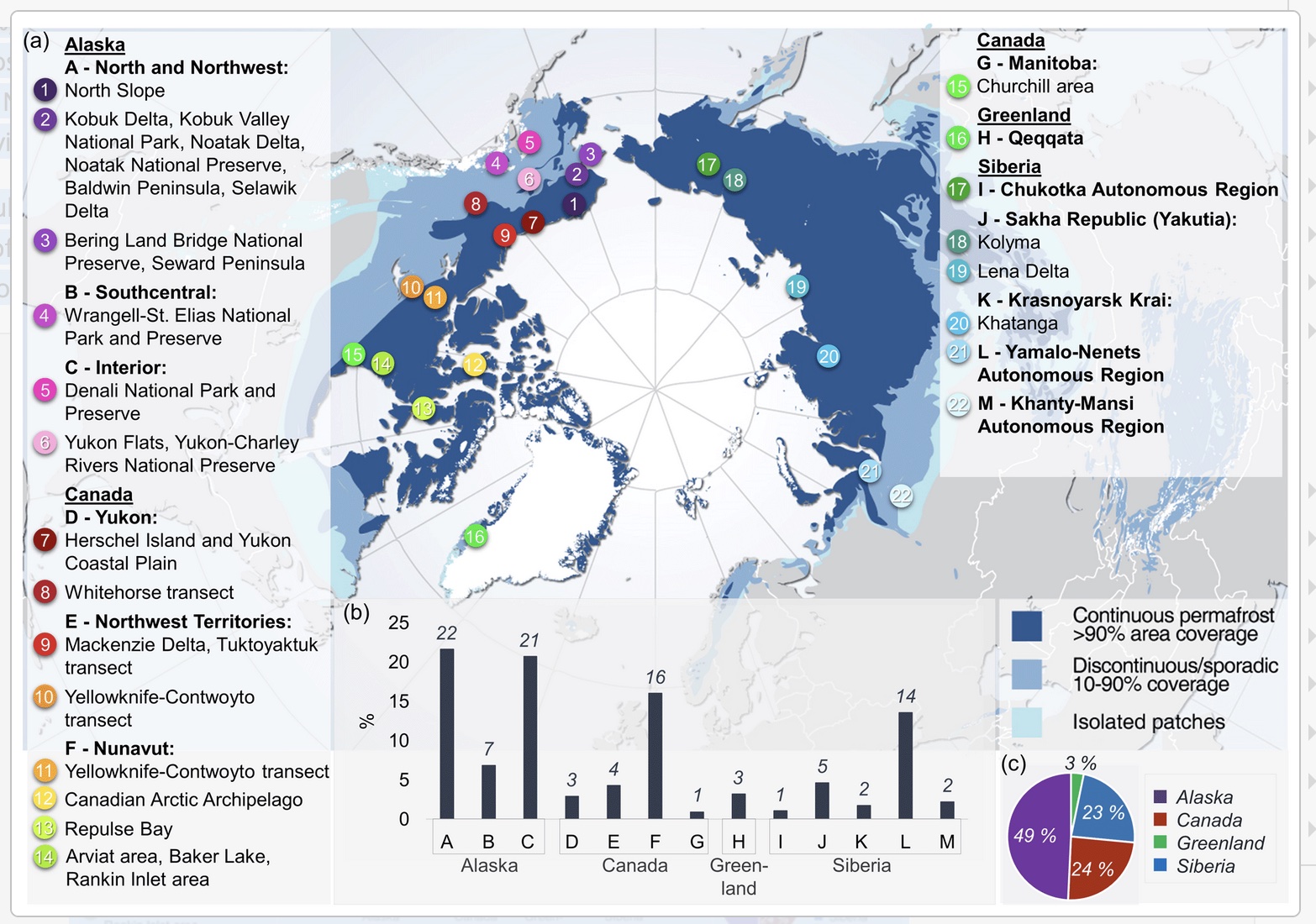Lakes in permafrost regions are dynamic landscape components and play an important role for climate change feedbacks. Lake processes such as mineralization and flocculation of dissolved organic carbon (DOC), one of the main carbon fractions in lakes, contribute to the greenhouse effect and are part of the global carbon cycle.

In their synthesis, the authors analyzed 2167 water samples from 1833 lakes across the Arctic in permafrost regions of Alaska, Canada, Greenland, and Siberia to provide first pan-Arctic insights for linkages between DOC concentrations and the environment. Using published data and unpublished datasets from the author team, the study reports regional DOC differences linked to latitude, permafrost zones, ecoregions, geology, near-surface soil organic carbon contents, and ground ice classification of each lake region.

This new pan-Arctic dataset shows that the DOC concentration of a lake depends on its environmental properties, especially on permafrost extent and ecoregion, as well as vegetation, which is the most important driver of lake DOC in this study. This new dataset will be fundamental to quantify a pan-Arctic lake DOC pool for estimations of the impact of lake DOC on the global carbon cycle and climate change.


